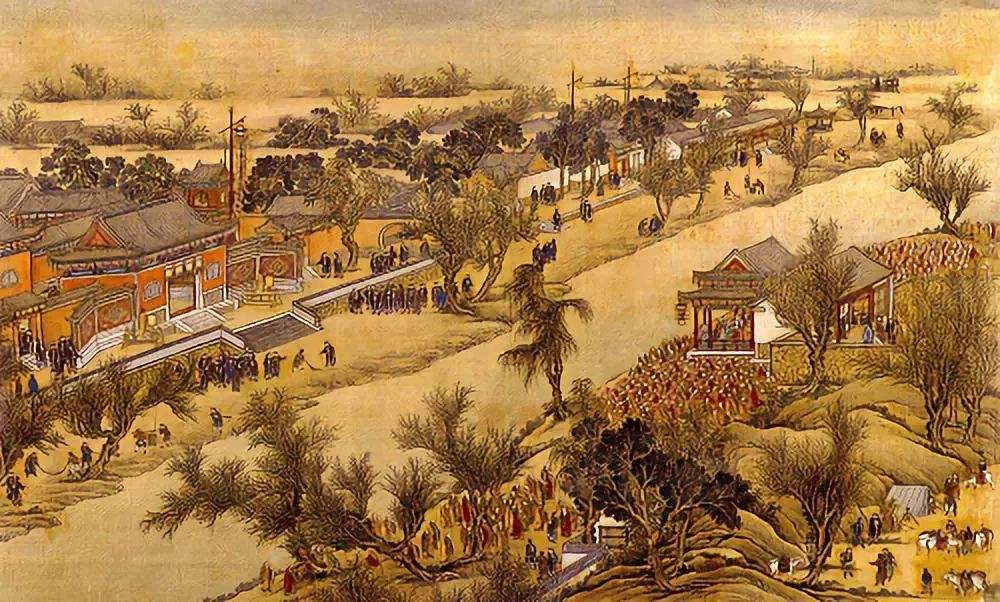Mountain-Water Gardens and Natural Landscape Gardens
4 min readAs society developed,people have in need of more gardens;as a result,garden-making in the empire became more prevalent and vigorous in the Song dynasty.The capital Bianjing(now Kaifeng,in Henan)and the west capital Luoyang,in particular,were two hottest places for garden construction.When the Southern dynasty moved its capital to the east of China,gardens began to thrive in Lin’an,Wuxing,and Suzhou.In Bianjing,there were nine imperial gardens like the Gen Yue Imperial Garden,the Jinming Pond,and the Qiong-Lin Park,etc.Luoyang as its counterpart also boasted plenty of gardens.The Celebrated Gardens in Luoyang by LiGefei records 19 private gardens in Luoyang at that time.Most of them were gardens with residential halls and courtyards,which were characterized with their own uniqueness.
Since the late Tang dynasty,garden-making became a fashion among scholars and lettermen.Instead of following the old extravagant and magnificent style,the urban gardens in the Song dynasty were as primitive,rustic and elegant as the villas built in rural areas.At that time,the garden-making skills were remarkably improved.Gardens were closely associated with poems and paintings.Meanwhile,moreand more architectural styles emerged.Artificial mountains made with piled rocks were universally adopted in gardens so that one could hardly find a garden without any rockery.Meanwhile,as the cultivation and grafting techniques developed,the varieties of trees and flowers considerably increased.
1.Mountain-Water Gardens in Impressionistic Manner and Natural Landscape Gardens in the Song Dynasty Generally,gardens in the Northern and Southern Song dynasties were marked with the notion that gardens should imitate the nature and then go beyond its beauty.There were two developmental trends:first,construction of mountain-water gardens in a impressionistic manner-to express feelings and emotions in construction of artificial landscapes so as to make it poetic and romantic;second,construction of natural landscape gardens-to build gardens in cities possessing plenty of beautiful sceneries by utilizing natural beauty,such as stones or rocks,trees,mountains,and slopes as borrowed landscapes.
1)Mountain-water gardens in impressionistic Manner and their artistic evolution In the Song dynasty,literati and painters combined poetry with fine arts and produced innumerous landscape poems and paintings.Painters and scholars indulgedthemselves into beautiful mountains and waters and attempted to make their lives fantastically poetic.Therefore,in a mountain and water garden conceived by a scholar,landscapes were interwoven with his feelings and passion.
Moreover,literati and painters practically took part in the construction activities by using his painting as a blueprint,or taking his poem as a subject.
Architecture,together with poetry and couplets written on scrolls,made a garden full of poetic atmosphere and,as a result,attracted people to stay longer.The literati and painters’participation exerted great influence on the garden-makingundertaking.A three-dimensional garden was more vivid and attractive than garden planned on a two-dimensional painting.Therefore,gardens made by literati and painters could bring about a perfect aesthetic effect.
In the Southern and Northern Song dynasties,the literati and painters’view on how to build gardens accelerated the development and maturity of garden-making arts.
Hence, in the Song dynasty, rural villas gradually gave way to urban gardens, in which, instead of borrowing natural hills and valleys, people constructed hills and dug gullies by hand. Artificial waters, pile rocks, and reconstructed architecture were salient features of gardens in the Song dynasty.

2) West Lake Garden and development of natural landscape gardens Another marked trend in this period was to create gardens with different artistic conceptions by man-made design and arrangement together with their origina.
environmental conditions as the basis. Influenced by those of literati and painters, these gardens were more or less characterized with impressionistic elements, but forms were different: most urban gardens with mountains and waters were artificial gardens with impressionistic tastes, which were perfect and faultless; however, under guidance of professional gardeners, literati, and painters, the natural landscape garden stood on its primitive landform and was more natural and unaffected. The West Lake Garden was a representative of this type.
In the Southern Song dynasty, in Lin’ an (now Hangzhou, in Zzhejiang), the royal clans, high-rank officials, and wealthy merchants built almost a hundred of gardens along the West Lake bank or near the suburb. As a matter of fact, since the Tang dynasty, literati like Bai Juyi, Su Dongpo, etc, did not only write of the West Lake, but also helped design and build gardens and hence contributed to the formation of the “Paradise on the Earth”.
The West Lake has handsome mountains and beautiful water. Innumerous pavilions, terraces, storied buildings, and towers expose to view among green trees and grass.
One can really feel the feeling that can hardly be expressed by poems or paintings. The most beautiful sceneries are known by Chinese and foreigners as the “Ten Scenic Spots”:”Spring Descending on the Su Causeway”,”Orioles Singing in the Willows”,”Viewing Fish in Huagang Pond”,”Lotus Flowers Swaying in Gentle Breeze in the Quyuan Garden”,”Autumn Moon on the Calm Lake”,”Snow on the Breaking Bridge”,”Leifeng Pagoda in the Twilight of the Setting Sun”,”Evening Bell Tolling at Nanping””Twin Peaks Soaring into Clouds”, and “Three Pools Mirroring the Moon”.
All these break up the enclosure of garden walls and make the West Lake an excellen example of natural gardens. While most of imperial gardens have been ruined, the West Lake maintains the tradition of a mountain-water garden and stands still as a famous scenic spot.








